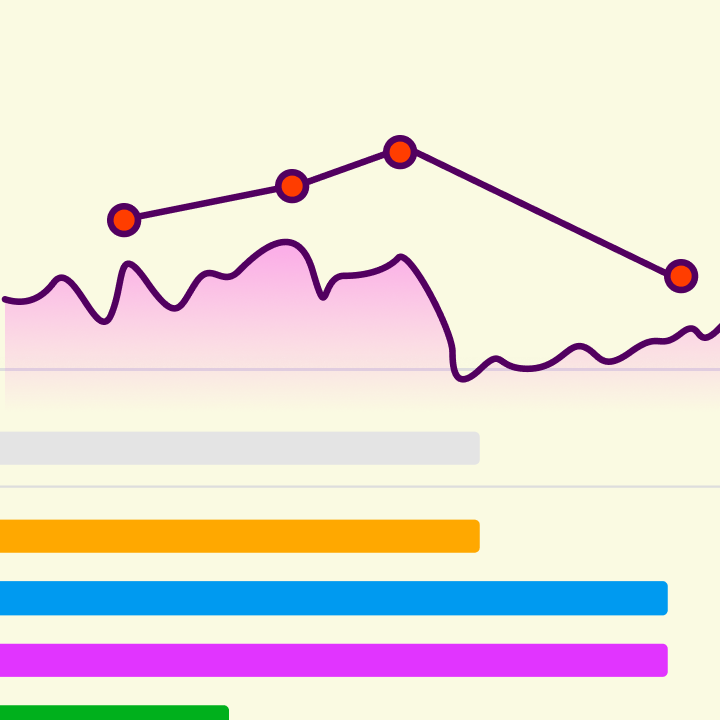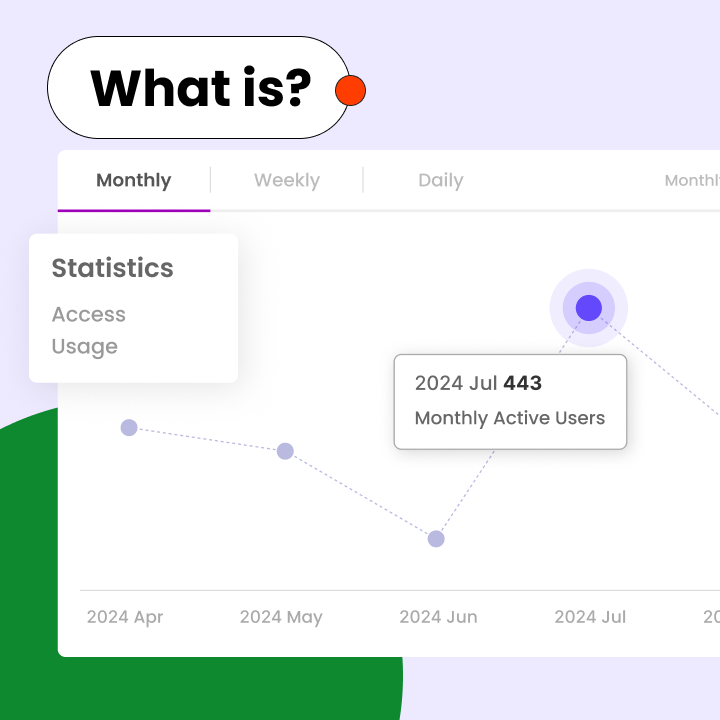Have you ever wondered why some projects run smoothly while others feel chaotic? The key isn’t having better people—it’s having better structure. Research indicates that 77% of high-performing projects have well-defined organizational structures, yet many teams still rely on messy email threads and disorganized spreadsheets.
In this guide, you’ll learn how effective project organization can turn confusion into clarity. We will outline the frameworks that top teams use to assign roles, visualize workflows, and maintain alignment without the usual frustrations.
What you’ll learn:
- Various organizational structures (functional, matrix, projectized) and when to use each
- How to create practical visual org charts
- A step-by-step process for building your project structure
- Real-world examples from product development, construction, and IT teams
- Best practices for keeping teams aligned and productive
Speaking of organization, Morningmate simplifies this process with their visual Gantt charts and social-media-style feeds. You can easily see who is responsible for what without getting bogged down in status meetings.
What Is Project Organization in Project Management?
Think of project organization as the foundation of your entire operation. It defines how functional departments are structured, clarifies roles, and establishes clear pathways for work from start to finish. Without it, you’re asking people to build a house without blueprints.
At its core, project organization addresses three essential questions:
- Who is responsible for what?
- How do they collaborate?
- Where does accountability lie?
This framework transforms a group of talented individuals into a cohesive unit that drives project success. When executed effectively, everyone knows their responsibilities, decisions are made quickly, and you spend less time in “wait, who’s in charge of this?” meetings.
Why Project Organization Matters for Successful Execution
Here’s a statistic that might surprise you: Projects with proper organizational structures are 2.5 times more likely to achieve their goals. This isn’t just luck—it’s a logical outcome.
Poor organization creates hidden obstacles. Tasks can slip through the cracks, team members may inadvertently step on each other’s toes, and critical decisions can stall because no one knows who has the final say. Sound familiar?
Strong project organization provides:
- Clear accountability – No more “I thought Sarah was handling that”
- Faster decision-making – The right people have the right authority at the right time
- Better resource management – Know exactly who is available and when
- Reduced conflicts – Everyone understands their roles
The Difference Between Project Organization and Organizational Structure
A functional project organizational structure represents your company’s permanent hierarchy—the org chart in HR. Project organization, on the other hand, refers to the temporary structure you create specifically for a project.
- Organizational structure = The neighborhood where everyone lives
- Project organization = The specific team you assemble for a road trip
For example, your marketing manager may report to the CMO in the company structure, but for Project Phoenix, they might report directly to the project manager. Same person, different role.
Types of Project Organizational Structures
Let’s explore the four main structures teams use to organize their projects. Each has its own strengths and weaknesses.
Functional Organizational Structure
The functional structure is a traditional, department-based setup. Team members stay within their departments—marketing reports to marketing, developers to engineering, and so on. The project manager acts more as a coordinator than a supervisor.
How it works:
- Project team members remain in their departments
- Functional managers retain authority
- The project manager facilitates communication between departments
- Resources are “borrowed” for project tasks
Advantages:
- Deep expertise – Specialists maintain their skills
- Clear career paths – Employees know their progression
- Resource efficiency – Talent can be shared across multiple projects
Challenges: Ensure you can effectively track progress.
- Slow decision-making – Everything must flow through departmental channels
- Divided loyalties – “Is this for my boss or the project?”
- Limited PM authority – Cannot directly assign tasks
Projectized Organizational Structure
This is the all-in approach. Team members are completely removed from their departments and report directly to the project manager. It’s like creating a startup within your company.
The setup:
- Dedicated team members (no sharing!)
- The project manager has full authority
- Clear, single reporting line
- The team disbands after the project ends
Why teams prefer it:
- Quick decision-making – The project manager makes the calls
- Total focus – No competing priorities
- Strong team identity – “We’re in this together”
Drawbacks:
- Resource constraints – Team members can’t be used elsewhere
- Career uncertainty – “What happens after this project?”
- Knowledge silos – Teams may become isolated
Matrix Organizational Structure
Welcome to the best of both worlds (when executed correctly) with cross-functional teams. Matrix structures combine functional and projectized approaches. Team members report to both their functional manager and the project manager.
Three variations:
- Weak Matrix – Functional manager has more power
- Balanced Matrix – Power is split evenly
- Strong Matrix – Project manager has greater authority
Benefits:
- Flexible resource allocation – Efficiently share talent
- Cross-functional collaboration – Break down silos
- Skill development – Team members learn beyond their departments
Challenges:
- Dual reporting confusion – “Which boss do I prioritize?”
- Political tensions – Managers may conflict
- Communication overload – More stakeholders mean more meetings
Organic, Virtual, and Hybrid Structures
Modern work requires modern structures. These emerging frameworks adapt to distributed teams and changing project needs.
- Organic Structure: Think “self-organizing teams.” Minimal hierarchy and maximum flexibility. Roles shift based on project phases and team strengths. This works well for creative agencies and startups where innovation is key.
- Virtual Structure: Designed for remote-first teams. Geography is irrelevant—only skills and availability matter. Project success relies on:
- Clear communication protocols
- Effective digital collaboration tools
- Strong documentation practices
- Hybrid Structure: Combine elements from different structures as your project evolves. Start with a functional approach for planning, shift to projectized for execution, and revert to functional for closure. It’s like having a transformer organization.
Project Organization Chart: Visualizing Roles and Responsibilities
Have you ever tried to explain your project structure verbally? It can be as confusing as describing a spider web over the phone. Visual organization charts provide clarity in seconds.
What Is a Project Organizational Chart?
A project organizational chart, or org chart, serves as your project’s family tree. It outlines reporting relationships, team connections, and decision-making authority. A quick glance can convey more than multiple meetings.
Think of it as your project’s GPS. It illustrates:
- Reporting relationships – Who reports to whom
- Team groupings – Which individuals collaborate
- Communication paths – How information flows
- Authority levels – Who has the power to approve decisions
Why use org charts?
- Quick onboarding – New team members can quickly understand the structure
- Conflict resolution – “Let me show you on the chart…”
- Stakeholder clarity – External partners know exactly who to contact
- Scope creep prevention – Clear boundaries lead to fewer surprises
The most effective org charts are not static PDFs collecting dust. They are living documents that evolve with your project. Morningmate’s visual workflow allows you to create interactive charts that update in real-time—much better than struggling with PowerPoint every time someone changes roles.
Key Roles to Include in a Project Org Chart
Your org chart should feature the right roles. Missing a key position can lead to decision bottlenecks or overlooked tasks.
Essential Roles:
Project Sponsor
- The financial backer (controls the budget)
- Makes go/no-go decisions
- Removes organizational obstacles
Project Manager
- The conductor of the project
- Manages the timeline, budget, and scope
- First point of escalation for issues
Team Leads
- Subject matter experts who guide their teams
- Act as a bridge between the PM and individual contributors
- Make technical decisions
Core Team Members
- The individuals executing the work
- Organized by function or deliverable
- Clear reporting lines (no isolated roles!)
Often Overlooked Roles:
Stakeholders
- Don’t hide them in an appendix
- Clearly show their connections
- Include their approval authority
Support Functions
- Legal, HR, IT, Finance
- Indicate as “dotted line” relationships
- Specify their level of involvement
External Partners
- Vendors, contractors, consultants
- Highlight integration points
- Clarify communication protocols
Sample Project Organization Diagrams (Functional, Matrix, etc.)
Let’s explore how different structures appear on paper for specific projects. These diagrams are not just visuals—they are blueprints for success.
Functional Structure Example (Software Update Project):
Notice the PM’s dotted line relationships? This indicates “influence without authority.”
Projectized Structure Example (Product Launch):
Clear, direct lines show exactly who reports to whom. No confusion, no politics.
Matrix Structure Example (Client Implementation):
Observe the dual reporting lines? That’s the matrix magic (and potential complexity). Tools with strong visualization features help manage these intricate relationships without overwhelming you.
Virtual/Hybrid Structure Example
Location tags are crucial in virtual structures. Time zones impact everything from meeting schedules to deadline planning.
Quick Tips for Better Org Charts:
- Limit hierarchy levels to under 5 (flatter structures are faster)
- Display only active relationships
- Update monthly (at a minimum) or after major changes
- Ensure accessibility for everyone
- Use collaboration tools that support real-time updates
Your org chart is more than just documentation—it’s a communication tool. Make it work as hard as your team does.
How to Create a Project Organizational Structure
Creating a project structure is straightforward, but skipping steps can lead to failure. Follow this foolproof process to build a structure that truly works.
Step 1: Define Project Scope and Stakeholders
Begin by clarifying the what and who before diving into the how. You can’t organize what you don’t fully understand.
Identify:
- Specific project deliverables
- Timeline and key milestones
- Budget limitations
- Success metrics
Map your stakeholders:
- Primary – Directly impacted (sponsor, end users)
- Secondary – Indirectly influential (legal, compliance)
- External – Outside partners (vendors, contractors)
Quick tip: Create a stakeholder interest/influence grid. High interest and high influence indicate your key players.
Step 2: Assign Project Roles and Responsibilities
Now it’s time to match the right people with the right roles based on their skills, availability, and interests.
Utilize a RACI matrix that includes a project coordinator:
- Responsible – Executes the work
- Accountable – Owns the outcome
- Consulted – Provides input
- Informed – Kept updated
Assign one person to each “A” role. Multiple “A’s” can lead to confusion.
Reality check questions:
- Does everyone have the capacity?
- Are skill gaps addressed?
- Who is the backup for critical roles?
Step 3: Establish Communication Lines
Ineffective communication can derail projects more than budget cuts. Set your communication channels before issues arise.
Define:
- Escalation paths – Who makes decisions when challenges occur?
- Meeting frequency – Daily standups? Weekly check-ins?
- Communication tools – Use email for formal messages and chat for quick questions
- Documentation location – Where will all project materials be stored?
Morningmate’s feed-style updates are effective for keeping everyone informed without overwhelming them with emails. Think of it as a work version of Facebook—minus the cat videos.
Step 4: Visualize the Structure
Words can confuse; visuals clarify. Create a visual representation of your structure that anyone can grasp in 30 seconds.
Best practices:
- Use consistent shapes and colors
- Clearly show reporting relationships
- Include names, not just titles
- Limit it to one page (seriously)
Digital tools are preferable to static diagrams. You need something that updates when team members change roles.
Step 5: Review and Optimize
Your initial structure won’t be perfect, and that’s okay. Incorporate regular checkpoints to refine it.
Monthly review questions:
- Where are decisions getting stuck?
- Who feels overwhelmed? Who is underutilized?
- Are communication channels effective?
- What changes would the team suggest?
Watch for red flags:
- Recurring issues
- Slow decision-making
- Bypassing the structure
- “I didn’t know who to ask”
Pro tip: The structure should serve the project, not individual egos. Be prepared to flatten hierarchies or shift responsibilities as needed. The best structure is seamless—work should flow effortlessly.
Best Practices for Effective Project Organization
Effective project organization isn’t just about following rules; it’s about facilitating a natural workflow. Here’s what distinguishes successful managers from those who struggle.
Align Structure with Project Goals
Your structure should reflect your priorities. If you’re building a quick prototype, keep it lean and flat. If you’re managing regulatory compliance, incorporate more checkpoints and approvals.
Match structure to outcomes:
- Speed-critical → Fewer layers, direct reporting
- Quality-critical → Built-in review stages
- Innovation-focused → Cross-functional teams
- Risk-averse → Clear approval hierarchies
Ask yourself: “Does our structure support or hinder our main goal?” If you’re uncertain, it’s likely hindering.
Empower Cross-Functional Collaboration
Silos can stifle projects. The best results come when marketing collaborates with development before issues arise.
Break down barriers:
- Create mixed team spaces (physical or virtual)
- Rotate meeting leadership
- Share successes across departments
- Establish “collision points” where teams must interact
Tools are crucial here. Morningmate’s workspace feature allows different departments to track each other’s progress without merging workflows. Transparency without chaos.
Use Visual Tools for Clarity
If you find yourself explaining your structure repeatedly, it’s time for better visuals. Show, don’t tell.
Visual essentials:
- Real-time org charts
- Kanban boards for workflow
- Gantt charts for dependencies
- Dashboard views for progress
Skip the PowerPoint. Use tools that automatically update as your project evolves.
Review and Adjust Structure Over Time
Static structures become obsolete. Your project will evolve, and your organization should too.
Monthly health checks:
- What’s working? What’s not?
- Where are the bottlenecks?
- Who needs more (or less) authority?
- Are roles still relevant?
Small adjustments are more effective than major overhauls. Make changes early and often.
Examples of Project Organizational Structures
Let’s explore how various organizational structures function in real-world scenarios. These examples illustrate common setups across different industries.
Example: Functional Structure in Product Development
In a functional structure, product development teams operate within their respective departments. Designers report to the design head, engineers to engineering leadership, and marketers to marketing directors.
Typical setup:
- The project manager coordinates efforts between departments.
- Team members juggle project tasks alongside their regular responsibilities.
- Department heads retain final approval authority.
- Resources are allocated across multiple projects as needed.
This structure is effective when specialized expertise is required and longer timelines are acceptable. Teams can enhance their technical skills while contributing to various projects.
Example: Projectized Structure in Construction
Construction projects often adopt a fully projectized approach. Here, the project manager serves as the sole authority, leading dedicated teams that report exclusively to them for the project’s duration.
Common approach:
- Site supervisors, safety managers, and procurement leads report directly to the project manager.
- There are no divided loyalties—everyone focuses on a single build.
- Decisions are made quickly without needing departmental approvals.
- The team disbands after project completion.
This structure is ideal for tight deadlines and critical coordination. Everyone is on-site, working toward the same goal.
Example: Matrix Structure in IT or Software Projects
IT projects frequently utilize matrix structures to balance technical expertise with project demands. Developers may allocate 60% of their time to the project while dedicating 40% to their regular departmental duties.
Standard arrangement:
- Technical staff report to both the functional manager and the project manager.
- Time allocation agreements are established upfront.
- Regular sync meetings occur between both managers.
- Specialized skills are accessible without full-time commitment.
Matrix structures allow organizations to leverage expertise across multiple projects without extensive hiring. This approach is perfect for complex technical projects that require diverse skills.
Streamline Project Organization with Morningmate
Effective project organization isn’t about perfect charts or complicated frameworks; it’s about getting work done efficiently. Whether you manage a project-focused organization or handle multiple projects, the right structure can turn chaos into clarity throughout your project’s lifecycle.
Your project organization checklist:
- Align the structure with different project management styles (speed, quality, innovation).
- Define clear roles using RACI during project planning.
- Create visual org charts that quickly onboard project members.
- Implement regular reviews to monitor project progress.
- Foster cross-functional collaboration, even among senior management teams.
Morningmate brings these principles to life. Our project management software adapts to both virtual and organic organizational structures.
Utilize project organization that aligns with team members’ skills—from Gantt charts for timeline clarity to social-style feeds that keep everyone connected. Eliminate confusion around project organization and promote seamless collaboration across all your project management styles.
FAQs About Project Organization
What’s the best structure for large vs small projects?
Small projects (under 10 people) benefit from simple, flat structures. Consider functional or weak matrix setups—short reporting lines and quick decision-making are key. You don’t need multiple management layers for a two-month initiative.
Large projects (50+ people) require more structure. Strong matrix or projectized frameworks help manage the complexity of coordinating multiple teams. The larger the project, the clearer your hierarchy should be. Think about forming sub-teams with dedicated leads.
The sweet spot: Match complexity to size. Small = simple. Large = structured. Always.
How does project organization impact performance?
Data shows that well-organized projects are 2.5 times more likely to succeed. Here’s how structure influences results:
- Clear roles lead to 30% fewer delays (no more “I thought you were handling that”).
- Defined escalation paths result in 50% faster decision-making.
- Visual org charts reduce communication errors by 40%.
Poor organization creates hidden obstacles. Tasks get overlooked, decisions stall, and teams waste energy on politics instead of progress.
Can organizational structure evolve during the project?
Absolutely—and it should. Static structures are ineffective. Your project will encounter phases that require different approaches:
- Planning phase: Often needs functional input.
- Execution phase: May shift to projectized for speed.
- Closeout phase: Could revert to functional for knowledge transfer




